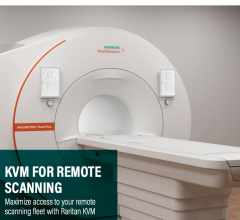
Greg Freiherr has reported on developments in radiology since 1983. He runs the consulting service, The Freiherr Group.
Meaningful Use is Dead … All Hail its Meaning

We have entered the era of the shrewd practitioner. It empowers the radiologist who looks ahead pragmatically; who recognizes where radiology has been, where it is going, and how radiology must adapt to get there.
This future came into focus last week, when Andy Slavitt Acting Administrator of the Centers for Medicare and Medicaid Services (CMS) said that meaningful use was dead and that it would be “replaced with something better.”
“Since late last year we have been working side by side with physician organizations across many communities — including with great advocacy from the American Medical Association (AMA) — and have listened to the needs and concerns of many,” Slavitt said Jan. 11 at the J.P. Morgan Annual Healthcare Conference. “We will be putting out the details on this next stage over the next few months.”
Might the demise of meaningful use help radiologists? Absolutely and unequivocally yes!
The death of meaningful use provides an enormous opportunity for radiology … but only if it can shed the centrist view of a picture archiving and communication system (PACS)- or research information system (RIS)-driven world, one defined by the interpretation of diagnostic images. It’s not going to be easy.
Radiology is comfortable, swaddled in the considerable accomplishments of its past. Radiology was, after all, the first in medicine to sign into the digital era. Radiologists did so out of a sense of pragmatism.
PACS solved a real world problem — what to do with proliferating digital images. Other physicians were pulled kicking and screaming by political mandate into the use electronic health records (EHR) — the Health Information Technology for Economic and Clinical Health (HITECH) Act of 2009 and its meaningful use.
But the medical world is changing. Wow, is it changing. Meaningful use is finished. And its demise is the perfect lever for radiologists to pull themselves to the forefront of patient management.
This opportunity crystallizes in the four reasons Slavitt gave for the end of meaningful use: First, to move more toward technology that can help physicians achieve better outcomes for their patients; second, to allow physicians to implement technologies that suit the needs of individual practices; third, to level the playing field for companies with technologies not in the mainstream — “to allow apps, analytic tools, and connected technologies to get data in and out of an EHR securely;” and fourth, to promote collaboration among physicians and patients — and to engage patients in their care.
And CMS, according to Slavitt, means business. To companies that are now dug in and might try unsavory tactics to keep their edge, Slavitt provided a warning: “Technology companies that look for ways to practice ‘data blocking’ in opposition to new regulations will find that it won’t be tolerated.”
The decision to abandon meaningful use — and CMS’ resolve to support innovators — couldn’t come at a better time for radiologists. Tools that radiologists can use to better collaborate with other specialists are already surfacing. Patient portals are multiplying.
Now the makers of PACS, RIS and EHRs just have to adapt their core products.
Medical records today are notoriously difficult for radiologists to access. Radiologists struggle to look up patient histories, when it takes no more than a click to bring up the images.
This is a fundamental barrier to the integration of radiologists with other specialists. It hampers the exchange of clinical information. Moreover, in an era when radiologists are trying to play a bigger role in patient management, this technological hurdle makes it difficult for radiologists to follow up on the recommendations they give referring physicians.
With the widening use of vendor neutral archives (VNA) and data consolidation, it makes sense that the information systems that underlie radiology and other specialties come together in a way that supports the interchange of information and opinions … and that radiologists demand and then embrace these systems.
What better way for radiology to meet its longtime goal to put patients first (see “RSNA Wags its Finger to Put Patients First”)?
This is the real meaning behind the death of meaningful use.
Editor’s note: This is the first blog in a series of four by industry consultant Greg Freiherr on Enterprise Imaging and the Patient.


 December 01, 2025
December 01, 2025 









